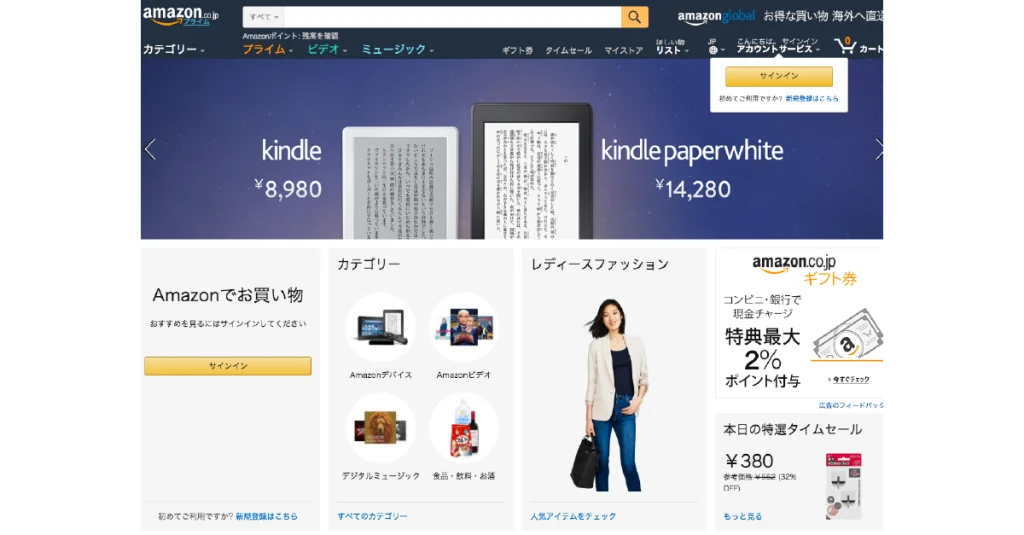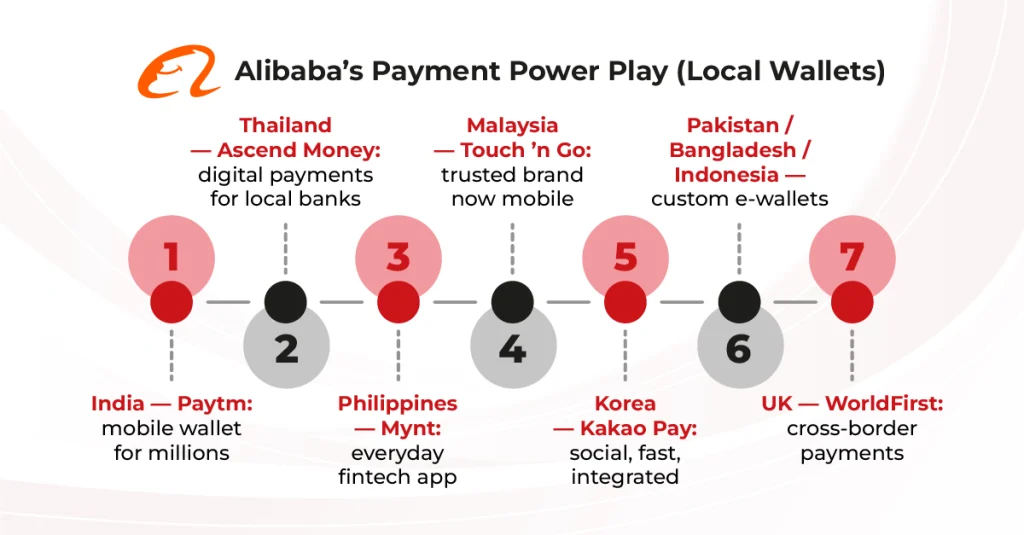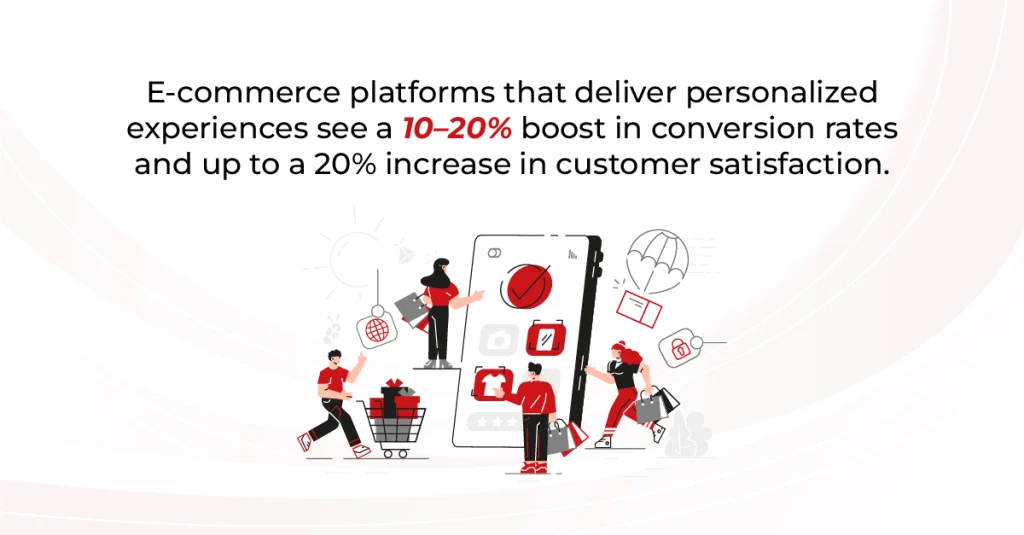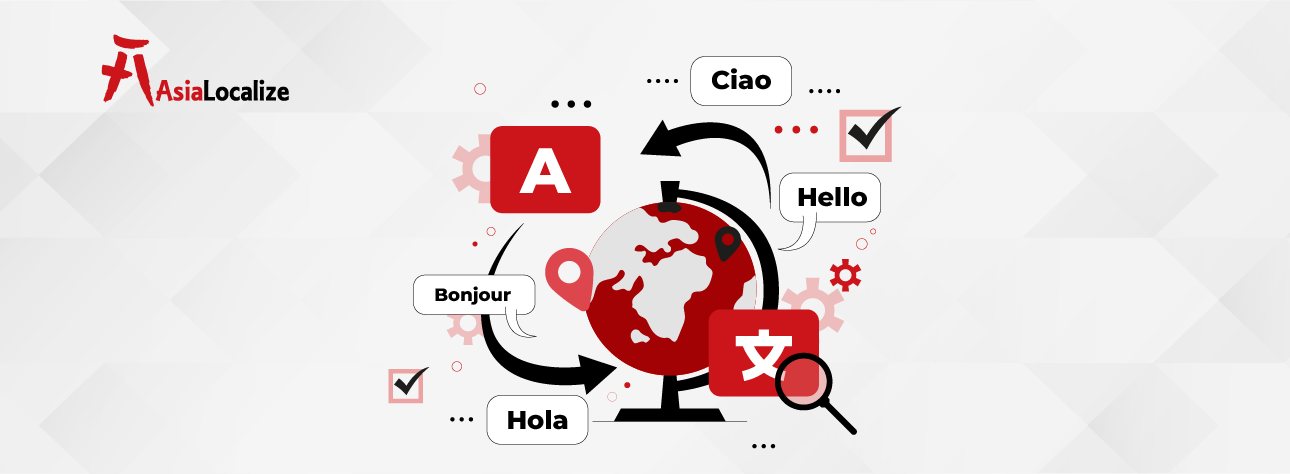Your online store is a global brand waiting to happen.
But here’s the truth: if your site is English-only, most shoppers will simply scroll past you.
Over 76% of global consumers prefer to buy products in their native language, and nearly 40% rarely or never purchase from English-only websites—even if they understand English.
Meanwhile, global e-commerce sales are projected to hit $7 trillion by 2025. That’s a market too massive and too multilingual to ignore.
If you’re serious about scaling globally in 2025, multilingual e-commerce is going to be your growth engine. In this guide, we’ll show you why.
Build a Solid Localization Strategy
How to Design a Multilingual Store That Feels Local Everywhere
Good localization makes a global store feel local, no matter where customers click from. It’s about creating an experience that feels familiar, relevant, and trustworthy.
A strong localization strategy starts with:
- Knowing where to grow – pinpoint markets that fit your product and resources.
- Studying regional search trends to see where demand is rising.
- Running local keyword research to learn how shoppers phrase their searches.
- Prioritizing the markets with the highest potential, using real user-behavior data to back your choice.
For example, IKEA cleverly sidesteps language limitations by using visual, picture-based instructions, making their content universally understood. It’s a smart approach that you can adapt to your own store.
And that is what localization calls for: cultural nuance translation, which means tuning the subtle cues that matter in each market. A color, an image, or a tone of voice can build trust or break it. What delights shoppers in Tokyo may fall flat in Berlin, so weave cultural adaptation into your e-commerce plan from day one.
And when it comes to multilingual product descriptions, don’t settle for generic translations. Surprisingly, 65% of consumers prefer content to be localized, even if it’s of poor quality. Use glossary management tools to ensure your tone and terminology stay true to your brand across every language.
| Confused About Localization vs Internationalization? This Blog Clears It Up. |
Tools & Tactics to Boost Conversions
Simple Moves to Lift Multilingual Sales
Once your store speaks your customers’ language, the next step is turning that connection into sales. These three areas, when optimized for localization, can have a massive impact on your conversion rates.
1. Win Local Search with Smart International SEO
Getting found is half the battle. To rank in local search results, you need more than translated content—you need technical SEO that speaks to both users and search engines.
- Use language-specific URL structures (e.g., /fr/ for French) to help search engines crawl and index your site correctly.
- Add hreflang tags to guide Google in serving the right version of your site to users in different regions.
Take a cue from Amazon, which dominates in Japan by optimizing for local terms like “高品質” (high-quality), not just English keywords.

2. Reduce Friction at Checkout with Local Payment Options
Even the best experience can fall apart at checkout if customers don’t see familiar payment methods.
- Show payment options locals already use, such as Alipay in China, Klarna across much of Europe, and Paytm in India.
- This simple shift can dramatically lower cart abandonment rates and build confidence in your brand.
3. Design for Language, Not Just Looks
Good design is local too. A layout that works perfectly in English may break down when used in other languages or cultural contexts.
- For right-to-left (RTL) languages like Arabic, flip your layout to match natural reading flow.
- Be mindful of text expansion—German, for instance, can take up 35% more space than English, affecting buttons, menus, and product cards.
- Adjust fonts, spacing, and components to maintain a clean and intuitive experience in every language.
Global Launch Mistakes to Avoid
Fix Errors Before They Sink Your Global Launch
Going global is exciting, but the wrong move at the wrong time can quietly stall your entire growth plan. These common pitfalls often slip through the cracks, but fixing them early can save you time, money, and a lot of frustration down the line.
- Skipping Localized SEO Basics
If your pages aren’t optimized for local search, your audience won’t even know you exist.
- Missing localized metadata like titles and meta descriptions means your site likely won’t show up in search results in places like France or Brazil.
- Even if your product is perfect, no one will find it without proper SEO foundations in every target market.
- Relying Too Heavily on Machine Translation
Translation tools can be fast, but also lead to translation accuracy issues.
- Studies show automated translations fail up to 45% of the time when it comes to context, tone, and meaning.
- A product name that works in English might sound confusing and offensive somewhere else.
- Invest in e-commerce-focused translation services or tools that offer human oversight to protect your brand voice across markets.
- Underestimating Language Scalability
Adding one or two languages might feel manageable, but what happens when you need ten?
- Not every CMS handles multilingual setups the same way.
- Platforms like Shopify and WooCommerce offer robust language support that can grow with you, without turning your backend into a headache.
Learn from Multilingual E-commerce Champions
Going multilingual is a strategy. And the brands doing it best aren’t just localizing their websites. They’re building entire experiences tailored to each region.
How Alibaba Goes Beyond Translation to Win Globally
Localization Lessons from One of the World’s Biggest E-Commerce Giants
When it comes to global e-commerce success, Alibaba didn’t just break into new markets; it built bridges into entirely different worlds. And while language translation was an essential part of that journey, it was only the beginning.
Alibaba’s real strength lies in how deeply it localizes its experience, adapting to the cultural, technical, and behavioral expectations of each audience. Here’s how the company tailored its global strategy to resonate on a local level across continents:
- Cultural Fluency, Not Just Translation
Alibaba’s global content teams transcreate, which means they adapt content in a way that reflects local humor, taboos, colors, holidays, and buying psychology.
In markets like Southeast Asia, for instance, where gifting etiquette, family-centered messaging, and symbolism around colors differ widely from China or the West, Alibaba makes sure its messaging feels right. Their campaigns are built with local cultural consultants and marketing teams to avoid missteps and build emotional resonance.
- Local Currencies and Measurement Systems
It might sound simple, but adapting currency and units is non-negotiable. On platforms like AliExpress, customers see pricing in their own currencies, not RMB or USD, which reduces friction and builds familiarity.
Measurements—such as inches vs. centimeters or pounds vs. kilograms—are also localized to match regional expectations. For a global platform selling everything from fashion to furniture, this kind of detail is what makes or breaks customer trust.
- Regional Date & Time Formats
Whether it’s for flash sales, delivery dates, or order confirmations, date and time formats are adjusted based on user location. In the U.S., a format like 07/04/2025 means July 4th. In the U.K., it means April 7th. Getting this wrong could confuse or even frustrate buyers expecting time-sensitive deliveries.
Alibaba’s platforms auto-adapt based on region, ensuring every message is understood clearly.
- Multilingual Payment Gateways
One of Alibaba’s smartest moves was payment gateway localization, which means integrating local payment systems into its platforms across regions. In Brazil, they accept Boleto Bancário; in Russia, QIWI Wallet; in Europe, Klarna and iDEAL are common options; and in Southeast Asia, cash on delivery remains a trusted choice for first-time e-commerce users.
This flexibility is a major driver of conversions. Nearly 59% of global e-commerce shoppers abandon carts due to unavailable payment methods. Alibaba avoided this trap by embedding localized payment flows in every market they entered.

Alibaba’s playbook isn’t one-size-fits-all. It’s market-by-market precision, combining centralized technology with local expertise. This approach is why Alibaba Group platforms serve users in over 190 countries, and why AliExpress alone had over 150 million active buyers globally as of 2023.
By embracing localization on every level—from copywriting to checkout—Alibaba isn’t just exporting Chinese e-commerce. It’s becoming part of the local e-commerce fabric in each country it touches.
| Before You Expand, Read This Guide on E-commerce Localization! |
AsiaLocalize: E-commerce Localization for Real-World Growth
Shoppers only trust a store that feels made for them. From search results and product pages to checkout and customer care, localization turns global traffic into loyal buyers.
AsiaLocalize delivers that edge. Our native linguists cover 120+ languages and bring on-the-ground insight across Asia, the Middle East, and other high-growth regions.
We don’t use one-size-fits-all playbooks. Your brand voice, market priorities, and growth goals drive a custom localization plan that scales smoothly as new languages come online.
Ready to make every visitor feel at home? Let’s localize your store.
| Let’s turn your global vision into a local reality. Explore Our E-Commerce Translation Services! |






